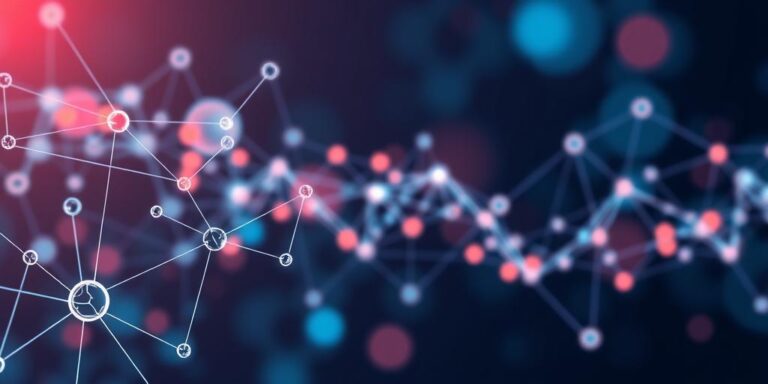The Evolution of Neural Networks: Beyond Deep Learning (2025+)
Neural networks have undergone a remarkable transformation since their inception, evolving from simple perceptrons to complex deep learning architectures that power many of today’s AI applications. However, the field is far from stagnant. As we look beyond 2025, several exciting advancements promise to reshape the landscape of neural networks.
Current State: Deep Learning Dominance
Deep learning, characterized by neural networks with multiple layers (hence “deep”), has achieved unprecedented success in areas like image recognition, natural language processing, and reinforcement learning. Convolutional Neural Networks (CNNs) excel at processing images, Recurrent Neural Networks (RNNs) and Transformers handle sequential data like text, and Generative Adversarial Networks (GANs) can generate realistic images and other data. Deep learning models such as BERT, GPT-3, and others have become foundational in their respective domains.
Limitations of Deep Learning
Despite its successes, deep learning has limitations:
- Data Dependency: Deep learning models typically require vast amounts of labeled data for training.
- Computational Cost: Training deep networks can be computationally expensive and time-consuming.
- Lack of Interpretability: Deep learning models are often “black boxes,” making it difficult to understand why they make certain decisions.
- Vulnerability to Adversarial Attacks: Small, carefully crafted perturbations to input data can fool deep learning models.
- Limited Generalization: Deep learning models may struggle to generalize to new tasks or domains that differ significantly from their training data.
Emerging Trends: Beyond Deep Learning
Several emerging trends aim to address these limitations and push the boundaries of neural networks:
-
Neuromorphic Computing: Drawing inspiration from the human brain, neuromorphic computing seeks to create neural networks that are more energy-efficient and biologically realistic. These systems use spiking neural networks (SNNs) that communicate with discrete spikes, mimicking the way neurons fire in the brain. Neuromorphic hardware, such as Intel’s Loihi chip and IBM’s TrueNorth, enables the efficient implementation of SNNs.
-
Reservoir Computing: Reservoir computing is a type of recurrent neural network that leverages a fixed, randomly connected recurrent layer (the “reservoir”) to map input signals to a higher-dimensional space. Only a simple readout layer needs to be trained, significantly reducing the training complexity. Echo State Networks (ESNs) and Liquid State Machines (LSMs) are popular reservoir computing models.
-
Attention Mechanisms: While transformers have popularized attention mechanisms, future research will likely explore more efficient and interpretable attention mechanisms. Techniques like sparse attention and learnable attention patterns could improve the scalability and transparency of neural networks.
-
Capsule Networks: Proposed by Geoffrey Hinton, capsule networks aim to capture hierarchical relationships between features in an image. Unlike CNNs that rely on pooling operations, capsule networks preserve spatial information and can be more robust to variations in viewpoint and pose.
-
Graph Neural Networks (GNNs): GNNs extend neural networks to graph-structured data, enabling them to process relationships and dependencies between entities. GNNs have applications in social network analysis, drug discovery, and recommendation systems. As datasets become increasingly interconnected, GNNs will play a crucial role in extracting valuable insights.
-
Physics-Informed Neural Networks (PINNs): PINNs integrate physical laws and governing equations into the training process of neural networks. By incorporating domain knowledge, PINNs can solve complex scientific and engineering problems, such as fluid dynamics, heat transfer, and structural mechanics.
-
Neuro-Symbolic AI: Combining neural networks with symbolic reasoning techniques, neuro-symbolic AI aims to create systems that can both learn from data and reason logically. This approach can lead to more interpretable and robust AI systems that can handle complex tasks requiring both perception and reasoning.
-
Self-Supervised Learning: To overcome the reliance on labeled data, self-supervised learning techniques train neural networks on unlabeled data by creating pretext tasks. For example, a neural network might be trained to predict missing words in a sentence or to colorize grayscale images. Once trained on the pretext task, the network can be fine-tuned for downstream tasks with limited labeled data.
Implications for the Future
The advancements in neural networks beyond deep learning have significant implications for the future of AI:
- AI at the Edge: Energy-efficient neuromorphic computing and reservoir computing will enable AI to run on low-power devices, such as smartphones, sensors, and IoT devices.
- Robust and Reliable AI: Techniques like capsule networks and adversarial training will make AI systems more robust to noise, attacks, and variations in the environment.
- Explainable AI (XAI): Attention mechanisms, neuro-symbolic AI, and other methods will make AI systems more transparent and interpretable, allowing users to understand why they make certain decisions.
- Scientific Discovery: PINNs and GNNs will accelerate scientific discovery by enabling researchers to model and simulate complex systems in various domains.
Conclusion
As we move beyond deep learning, the future of neural networks is bright. Emerging trends like neuromorphic computing, reservoir computing, capsule networks, GNNs, PINNs, neuro-symbolic AI, and self-supervised learning promise to overcome the limitations of deep learning and unlock new possibilities for AI. These advancements will lead to more energy-efficient, robust, interpretable, and versatile AI systems that can tackle complex problems in various domains. The evolution of neural networks is a continuous journey, and the next chapter promises to be even more exciting than the last.




